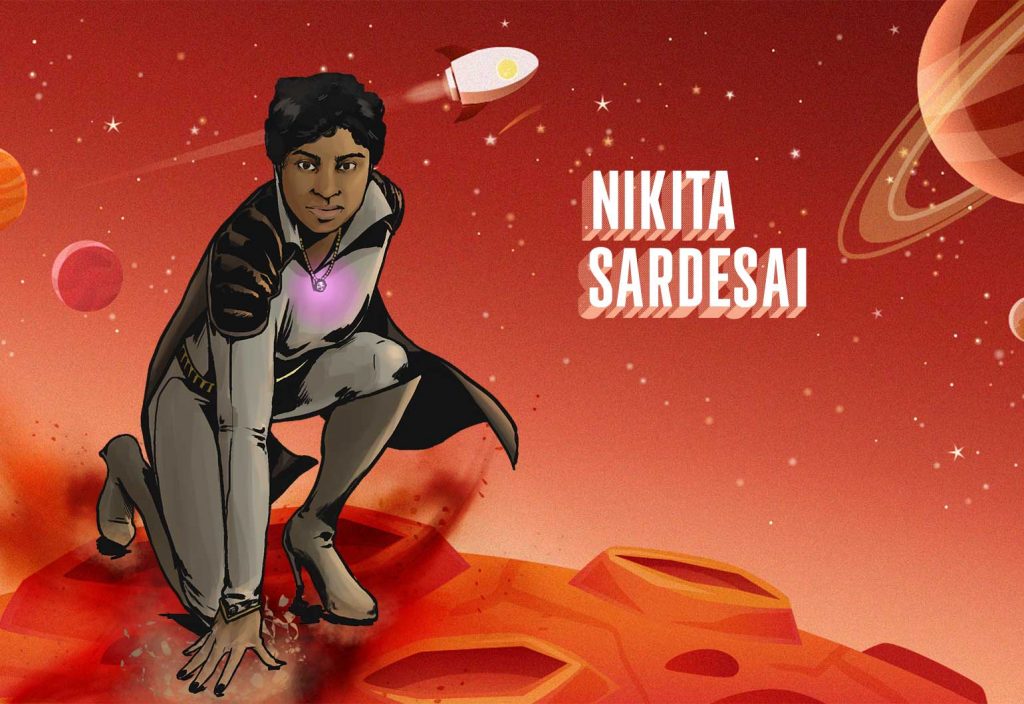MEET ALL OUR INTERNATIONAL WOMEN IN ENGINEERING DAY HEROES
Long before a rocket can be launched into space, the proposed mission must be put through a series of complex models and simulations to ensure its success — and safety. Systems engineer Nikita Sardesai helps make this happen.
Sardesai didn’t set out to become an engineer. She has long been excited by space — a passion that was fuelled by watching American astronomer Carl Sagan documentaries when she was a teenager — and enrolled in a physics degree after finishing high school.
“I was looking at all my options and thinking about what I could do after I graduated, and I decided to just tack on engineering as well because it seemed a bit more practical,” she told create.
“It turns out I enjoyed the engineering piece way more than I expected. I fell in love with it.”
Studying different aspects of engineering at the University of Sydney opened up a whole new world for Sardesai, with each new subject “like being given a new tool and being shown how to use it”.
“This means that when you’re trying to fix a problem, you can pick the right tool to use to solve it,” she said. “I really liked that process of having a curly problem and trying to pick which tool fits best.”
Next was a placement with Boeing Aerostructures Australia’s Product Support Engineering Unit at Melbourne’s Fishermans Bend.
There, while working on materials and process engineering for 787 Dreamliner fabrication, Sardesai saw the practical, problem solving role engineers play up close.
The Boeing 787 Dreamliner has distinctive curved wing tips, which provide better aerodynamic performance, helping to improve fuel efficiency. Boeing Aerostructures Australia manufactures the ‘moveable trailing edge’ surfaces of the 787 using a carbon fibre production technology developed in Victoria, called resin infusion, and it was this process Sardesai worked on.
“The trailing edge of the wing is made out of carbon fibre, so they lay all the carbon fibre out and then inject resin into it, and bake it in an oven,” she said.
“I was working on the manufacturing production support side. The types of challenges would be, ‘we’re getting this sort of defect in these parts — what could be happening? How can we change our process to remove that defect? Or how can we improve our process to reduce waste or make the process faster?’”
Simulating space
It was another internship that led to Sardesai’s current role at Adelaide-based engineering and design firm Shoal Group.
“In my last six months [of university] I interned with Shoal, and when I graduated they asked me to join,” she said.
That was in 2016, and she has since moved from a graduate to a systems engineer working on modelling and simulations for defence contracts. This involves working with Shoal’s clients to simulate the performance of various aerospace vehicles in different environments — the perfect job for a child who was obsessed with space.
“In some cases, we might be simulating rocket launches to get an understanding of [what happens] after the launch. For example, where is the launch debris going to fall and how can we make sure that it’s completely safe to do that launch?,” she said.
“One of the interesting challenges is accurately representing how something like that is going to fall to the ground and making sure it actually represents what will happen in the real world.”
The business has grown by around 200 per cent in the last few years, now numbering about 90 employees, which has provided more opportunities to take on interns and graduate engineers. This has been exciting for Sardesai, who has taken on the role of Shoal’s Graduate Coach.
“I really enjoy working with grads, because they’re super passionate, keen to learn and bring an excitement and different way of thinking to the workplace. But they are learning about business context and how industry works,” Sardesai said.
“It’s important to bridge that gap, because you unlock some really amazing innovation. They’ve just entered the workforce, they’ve spent five years learning four subjects a semester, which is a crazy rate of learning, so let’s channel that energy and passion.”
As for her own passion, Sardesai said she gets a kick out of communicating complex information to a non-technical audience.
“As engineers, we often deal with really complex problems, and unless you know what matters to your audience, then your message will get lost in the details,” she said.
“Sometimes you don’t need to present the numbers and analysis. Instead, you need to communicate why the audience should care in the first place.”
She plans to continue using her engineering skills to untangle challenging problems — preferably in the space industry — and said she believes an engineering approach will become increasingly sought after outside of the profession.
“I think there are a lot of roles now that might not necessarily be called ‘engineer’, but require an analytical, problem solving skill set,” she said.
“With engineering, you’ve got a problem, and you’ve got a toolset. So you just have to choose which tools to use to fix the problem.”
